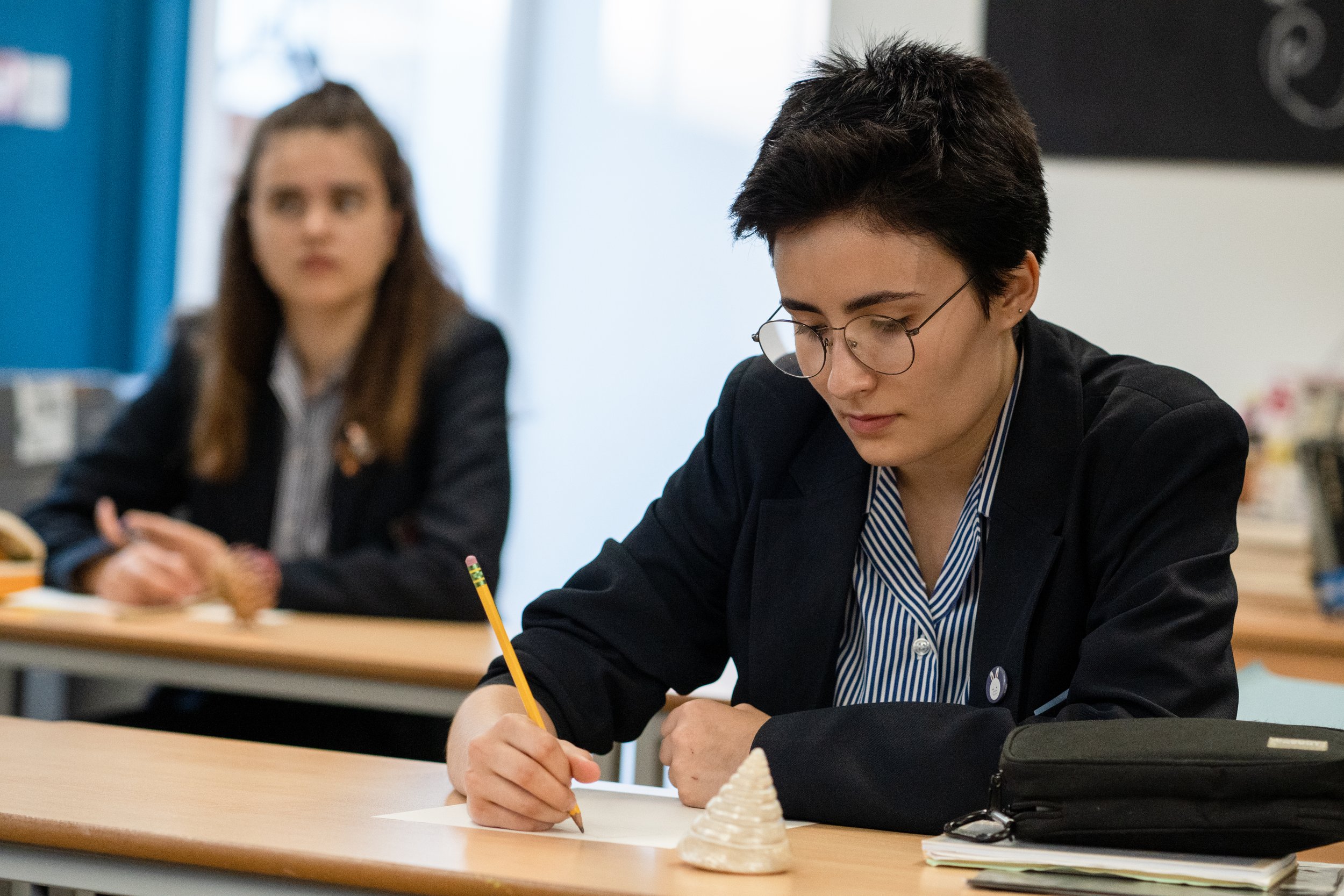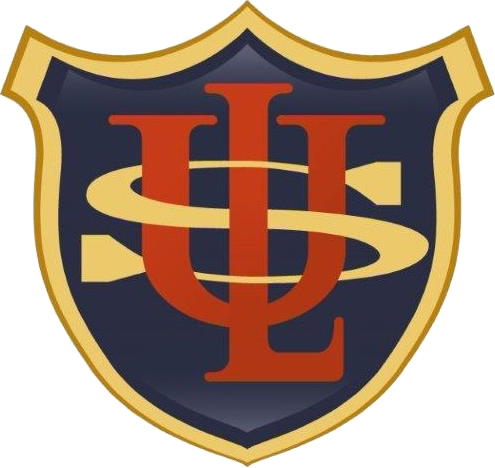
MATHEMATICS
Overview Of The Subject
Mathematics is a creative and highly inter-connected discipline that has been developed over centuries, providing the solution to some of history’s most intriguing problems. It is essential to everyday life, critical to science, technology and engineering and necessary for financial literacy and most forms of employment. A high-quality mathematics education therefore provides a foundation for understanding the world, the ability to reason mathematically, an appreciation of the beauty and power of mathematics and a sense of enjoyment and curiosity about the subject.
Aims Of The Curriculum
Through the study of Mathematics, we endeavour to create students who have the passion, intrigue and resilience necessary to take on the problems of the world around them. By emphasising a strong base of logic and reason, we would hope to build in to our students a rigour in their approach to solving problems and proving ideas. Through equipping them with the language and tools required, we would hope to see them communicate these ideas to a wider audience with clarity and precision. Mathematics is for all, and we would embrace a strong ethos of inclusion as well as challenge. We would look to celebrate all students as they move towards becoming curious, rigorous, resilient problem solvers.
Curriculum Content At Key Stage 3
Students follow the New Secondary Curriculum for Mathematics. The Mathematics Department offers an exciting and challenging programme of study that enables students to gain confidence and develop their mathematical skills.
There is a variety of teaching and learning techniques used within the department. Extra help is available both in and out of lessons for students who are less confident and extension work is available for the most able to provide them with more challenging tasks. Students learn to use and apply their mathematical knowledge in practical situations, real life problems and through investigations, which help to develop their problem-solving skills. Mathematics teaching is enhanced by the use of interactive whiteboards. Students have access to a number of online resources, including Maths Watch, which can be accessed in school or at home. Some students are entered for the UKMT Mathematical Challenge at Junior and Intermediate level. It encourages mathematical reasoning, precision of thought, and fluency in using basic mathematical techniques to solve interesting problems.
Year 7
Students in Year 7 are initially placed in mixed ability groups to start with when they all be doing the same unit of work and are then placed in 5 sets once they have been tested after approximately 3 weeks. We are using a baseline test that will test the knowledge and skills of Year 7 students. It tests pupils on the content of the Year 6 curriculum and it provides a great benchmark for students and is a good start to help the measure of progress across Key Stage 3. This baseline test would help us to identify the students who have not achieved the expected standard and not deemed ‘secondary ready’. We would implement strategies to support those pupils in lessons and outside lessons by targeted intervention and classroom differentiation before the pupils are tested at the end of the year.
Our Year 7 curriculum is structured in order to provide a solid foundation for future study, to bridge gaps in understanding (given the range of primary schools our pupils are drawn from) and builds confidence incrementally. Consequently, it has an explicit focus on algebra and its application. We also value the correct presentation of mathematical solutions. Through Year 7, we aim to develop pupils’ understanding in the different aspects of mathematics, namely algebra; number; shape and space.
Teaching is structured into ten discrete units (analysing and displaying data; number skills; equations, functions and formulae; fractions; algebra and shapes; decimals; equations; multiplicative reasoning; perimeter, area and volume and sequences and graphs) which run alongside the textbook, Collins. This textbook is used in lessons and features skill-based and problem-solving type questions.
Exercises (including extensions tasks) will be set from the textbook and supplemented through the use of worksheets and Maths Watch, an interactive online teaching and homework website.
At the end of each unit, pupils complete an end-of-unit test under examination conditions; marks from these assessments contribute towards the grade awarded at each data dropping phase. After each data dropping those who do not achieve their target grade will be provided with additional support (in the form of intervention, targeted work) in order to build their knowledge, understanding and confidence. At the end of the year, pupils will be required to sit two one-hour papers (calculator and non-calculator).
Year 8
We aim to build upon Year 7 work and foster the ability of each pupil to work both individually and collectively. Topics studied include: advanced number skills, working with powers, shapes and solids, angles, constructions and application of graphs.
Students will have a focus on topics within the areas of “Algebra”, “Probability” and “Ratio and Proportion”, including: simplifying algebraic expressions, substitution into formulae, solving and forming linear equations, rearranging formulae, graphs, finding probabilities, solving ratio and proportion problems.
Students are tested at end of each unit and they all will be required to sit two one-hour paper in May. Their teacher will tell them the date of the test and they will be provided with a revision list in advance.
Year 9
Pupils go on to study a three-year GCSE course from Year 9 to Year 11. At this point pupils will follow either a higher or a foundation curriculum, which is based on their ability. Although grouped by ability, the syllabus covered by all the sets is very similar. The higher sets take the work at a faster pace and to a greater depth. Here they reinforce the number and algebra work already studied, building on it in some places. They also study shape, probability and data in more detail; with their skills in number and algebra these topics are more easily mastered.
Curriculum Content At Key Stage 4
Year 10 And 11
The school enters all pupils for GCSE Mathematics at the end of year 11 using the 1MA1 Pearson Edexcel Level 1/Level 2 GCSE (9–1) specification. https://qualifications.pearson.com/content/dam/pdf/GCSE/mathematics/2015/specification-and-sample-assesment/gcse-maths-2015-specification.pdf
Some pupils are entered for Entry Level qualifications in Maths if this is deemed helpful.
Aims Of The Curriculum
In Year 10, we will continue with the topics extending the knowledge from previous years and introducing new concepts and techniques. Classes are divided into 5 sets. Students’ positions in appropriate sets will be reviewed at the end of Year 10 and finally after their second Mock exam in January. All students, in all sets, will take the Edexcel Higher Tier GCSE 9-1 examination at the end of Year 11. The examination consists of three equally weighted papers, one to be taken without a calculator and two non-calculator papers. There are two tiers of entry:
Higher Tier where the possible grades are 9(highest) to 4
Foundation Tier where the possible grades are 5 to 1(lowest)
Students in Set 1 cover the work at a fast pace and study each topic in great depth. An emphasis is placed on developing strong algebra skills, in addition to the ability to problem solve, reason and communicate mathematically. Students are expected to show a particular flair for the subject and produce work of a consistently high standard. Grade 9 is the aim.
Students in Set 2 and 3 will follow the same syllabus and scheme of work as Set 1, but will not necessarily study the topics in such great depth. Grades 6 and 7 are the target grades for most students in these sets.
Sets 4 and 5 will comprise of smaller sets of students who typically find the subject difficult. They will follow the foundation scheme of work and with a greater emphasis on accurately carrying out routine procedures or set tasks requiring multi-step solutions. All students in this set are capable of achieving at least a grade 4. However, the target grade is usually a 5 or a 6, though some will have a grade 7.
To have a decent chance of doing the higher tier at GCSE, students should have a grade 6 or at least a good grade 5 by the end of Year 10. However, the final decision will be made after the second set of Mock exams in January of Year 11.
Curriculum Content: Years 9, 10 And 11
After KS4
Pupils are encouraged to continue their study of Mathematics if they enjoy the subject. A’ level Maths is challenging and most schools or colleges demand at least a Grade 7 to study the subject.
This link gives your options if you enjoy Maths and wish to study it further. https://amsp.org.uk/students/gcse/what-next
If you plan to study A’ level Maths this link provides so materials to help make the transition to A’ level Maths smoother. https://amsp.org.uk/resource/gcse-alevel-transition-resources
Core Maths is a relatively new type of qualification. It’s designed for students who have passed GCSE Mathematics at grade 4 or above, but who have not chosen to study AS or A level Mathematics.
You’ll learn some new topics, but it mostly involves maths you’ll have already used for your GCSE. Where it differs is its focus on developing the skills you need to apply maths to the kinds of real-life problems you’ll meet in study, work and life.
Core maths is usually studied over two years. It’s equal in size to an AS level and is graded A-E. It has the same number of UCAS tariff points as an AS level. This link provides more information.
Additional Information
All students have login details for MathsWatch and will continue to be set homework tasks on this website in addition to their written homework. Revision is supported with the Maths Watch 9-1 videos.
Textbooks: Collins KS3 Maths Now, Edexcel GCSE (9-1) Foundation and Higher text books.
Useful Websites:
https://www.bbc.com/education/examspecs/z9p3mnb for revision and extra practice.
https://nrich.maths.org/secondary for enrichment activities and problem solving.
https://corbettmaths.com and https://mathsgenie.co.uk/gcse.html are excellent resources for videos, worksheets and practice questions.
https://www.thenational.academy/ - provides lessons, worksheets and quizzes to check understanding.
